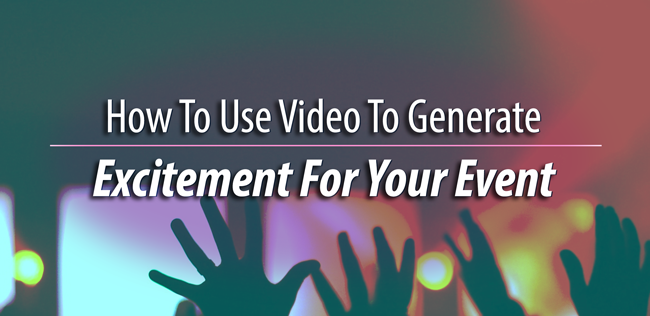Video is the preferred communication style today for the majority of the tech-savvy event attendance population. Before reading any text on a website, 60% of the site’s visitors will watch a video if it’s available. As such, it’s not surprising that video content is one of the top driving forces behind inbound marketing. Capturing video content at your events and using video in your marketing tools is critical for creating an event experience like none other.
Encourage sign ups with promotional videos
A brief, high energy video with testimonials and feedback from previous events will spur people to sign up for the upcoming event. People who have attended past events will get excited remembering the good times for the last event while people who haven’t attended before will be intrigued about what the upcoming event has to offer.
Host live streaming of your event
Live streaming brings the event experience to those who can’t be there physically but still want to share in the experience as it’s happening. It also extends the reach of the content within the event itself. For example, maybe a live presentation in the auditorium is broadcasting on the show floor during an annual industry event. If you’re offering live streaming, think about including life chat functionality and social media integration. People watching at the event and elsewhere will stay plugged in and interact with one another throughout the live stream.
Encourage video sharing on social media
Nothing is more powerful than seeing video from fellow event attendees. Create a hashtag for the event (i.e. #AlphaAMC) and advertise it widely during the event so people will tag relevant photos and videos. During breaks and social gatherings at the event, share the best attendee generated content. This process will encourage participants to keep shooting and sharing even more video. Consider holding a contest and awarding prizes for the best video clips.
Keep the conversation going with follow up video content
During the planning stages of the event, think about video coverage you’ll need to get to offer video content following the event. If you wait until the event is over, you may not have the footage you need. Make sure at least a portion of the after event video is available to the general public, giving people who did not attend an opportunity to preview the event and interact with those who did attend to get a better feel for the event. Create different types of video for different contexts. Short, teaser content for future events is ideal for social media while longer, uncut recordings of speeches and presentations are better suited for your event website.
The reach of your videos extends far beyond the event itself. Most event planners opt to host their videos on YouTube or Vine, which are the top video platforms for sharing video content with 157 million and 107 million unique video viewers respectively, and then embed the videos within their event websites. Facebook and Vine are also ideal platforms for uploading and sharing video with 103 million and 100 million unique video viewers respectively. Once you’ve uploaded your videos, think about sharing them via email and social media channels as well to boost exposure for your events and extend the event experience for participants.
